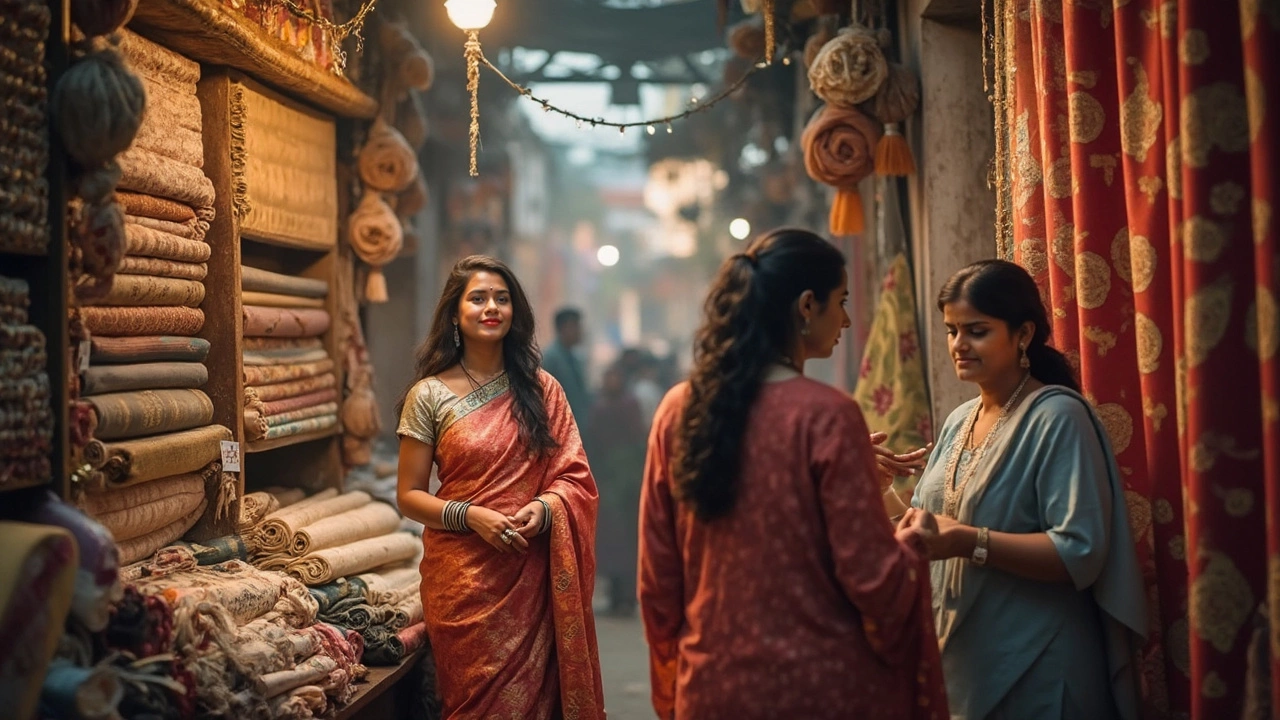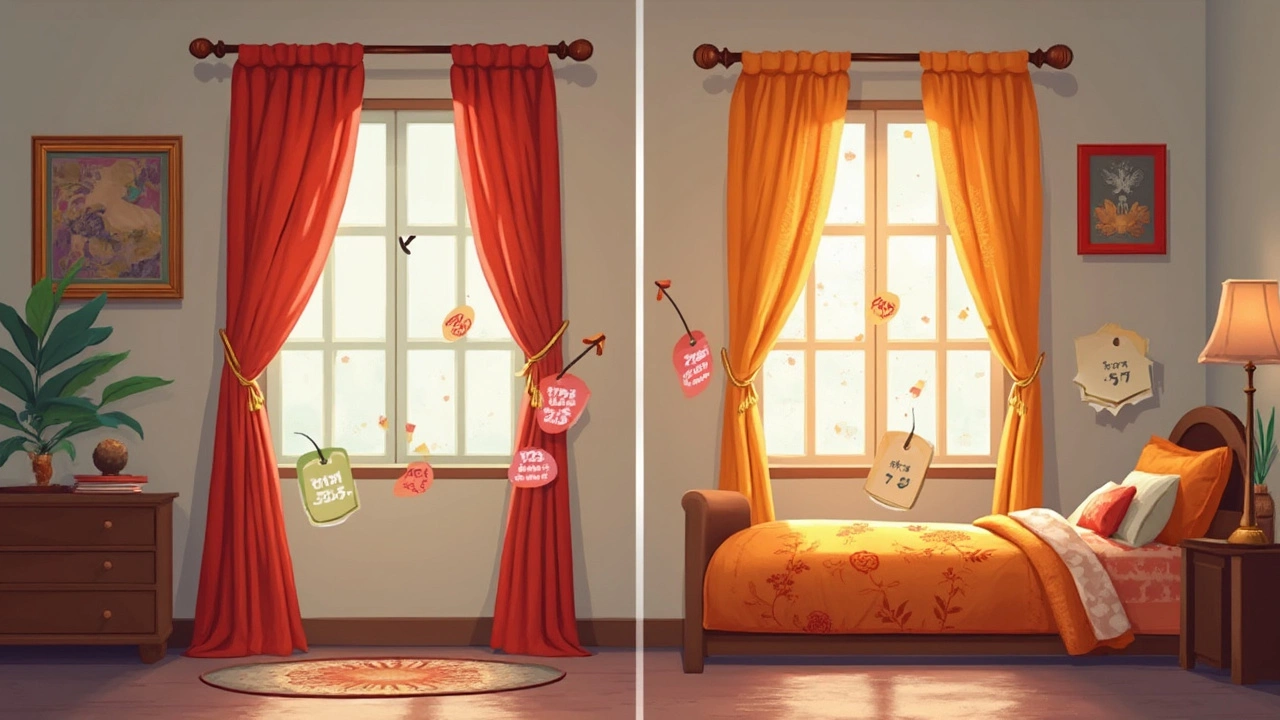Are Drapes More Expensive Than Curtains? Your Real-World Cost Comparison

Sticker shock hits fast when you start shopping for window treatments. One second you’re looking at curtains, and then—bam!—you check out some drapes and the price tag practically doubles. Why does this happen? Is it just a brand thing, or is there more behind the scenes?
Before you pull out your wallet, it helps to know that drapes and curtains aren’t just two words for the same thing. The details, like what they’re made of and how they’re put together, have a big effect on the final price. You’ll find that something as simple as lining, fabric thickness, or even how long the panels are will push up the cost—especially with drapes.
Comparing prices online or in stores gets confusing fast, because companies use 'curtains' and 'drapes' interchangeably. If you want the truth about what you’re actually paying for, and whether the extra cash for drapes is ever worth it, you’re in the right spot. Let’s break down the reasons for the cost difference so you can make a smarter choice for your home—and your budget.
- What’s the Real Difference Between Drapes and Curtains?
- Why Drapes Usually Cost More: Materials and Labor
- Pricing Breakdown: What to Expect at the Store
- Money-Saving Tips for Both Drapes and Curtains
- How to Decide What’s Worth It for Your Home
What’s the Real Difference Between Drapes and Curtains?
People toss around the terms drapes and curtains like they’re the same thing, but there are some real differences—especially when it comes to cost, looks, and even how they work for your space.
Curtains are lighter and simpler. Most are made from cotton, polyester, or blends and usually come unlined—basically just one layer of fabric that hangs from a rod. You’ll see them around kitchens, bedrooms, and even bathrooms. They let in a good amount of light, so they’re great if you don’t want everything blacked out.
Drapes, on the other hand, step it up. They’re made of heavier fabrics—think velvet, brocade, or thick linen. These are almost always lined or even double-lined. This extra fabric gives drapes that full, formal look. They block out way more light and give you a lot more privacy. That’s why you see them in living rooms and dining rooms, or anywhere you want to add a bit of drama.
- Curtains: lighter, single-layer, easy to wash, casual feel, more budget-friendly
- Drapes: heavier, lined, hard to wash (usually dry clean only), fancier, higher price tag
If you’re sweating about which one is right for your windows, think about what you want: Do you need full darkness, or just a little privacy? Do you want something casual or show-offy? These details make a real difference not just in style, but in how much you’ll pay at checkout.
| Feature | Curtains | Drapes |
|---|---|---|
| Material | Light (cotton, polyester) | Heavy (velvet, brocade) |
| Lining | Rarely | Almost always |
| Light Control | Medium to low | High (room darkening) |
| Cost | $-$$ | $$$-$$$$ |
| Maintenance | Machine washable | Dry cleaning needed |
The nuts and bolts? If you see a thick, elegant window treatment that looks like it belongs in a hotel or theater, that’s a drape. If it’s breezy and bright, you’re most likely looking at a curtain. That’s the foundation for why prices are all over the place.
Why Drapes Usually Cost More: Materials and Labor
So, what’s really driving up the price on drapes compared to curtains? First, it’s the stuff they’re made of. Drapes almost always use heavier, more luxurious fabrics. We’re talking thick cotton, velvet, or even silk instead of lightweight polyester or cotton blends you find in most curtains. These premium materials don’t just look fancier—they cost more, plain and simple.
Another thing to look at is the lining. Drapes usually have at least one extra layer stitched in. This extra lining isn’t just for show; it helps block out light, insulate against drafts, and even dampen outside sounds. More fabric and more sewing means higher costs at every step. With curtains, you often get a single piece of fabric and call it a day.
Let’s talk labor. Drapes need more work during production. Those heavy materials are tough to cut and sew, and adding linings or pleated headers takes real skill and time. Because of the extra steps, making one set of drapes can take twice as long as a simple set of curtains—which bumps the price way up, especially for custom jobs.
- Drapes use denser, thicker fabrics like velvet, brocade, or blackout materials.
- Often, there’s double or even triple lining for insulation and light control.
- Special details—like pinch-pleats, heavy-duty hooks, or extra-long panels—require more handiwork.
Just to put numbers to it, you’ll usually find ready-made drapes running anywhere from $50 to $300 per panel, depending on material and length. Curtains of similar size can cost as little as $20, and rarely top $100 unless you’re picking something ultra-custom.
| Window Treatment | Typical Price Range (per panel) | Main Materials |
|---|---|---|
| Curtains | $20 - $100 | Polyester, cotton blends |
| Drapes | $50 - $300+ | Velvet, silk, blackout fabrics |
Bottom line? You’re mostly paying for higher-end fabric, extra layers, and more time spent at the sewing machine. That’s why you’ll see drapes with beefier price tags on the shelf.

Pricing Breakdown: What to Expect at the Store
Walk into any home store or scroll an online shop and the prices you see for drapes versus curtains can leave you surprised. On average, basic curtain panels for a standard window (about 54 inches wide by 84 inches long) can run anywhere from $20 to $60 per panel. If you’re eyeing fancier fabrics or custom sizing, that price can jump to around $100 per panel.
Now, take a look at drapes: you’ll often see those starting at $60 per panel for something basic, with mid-range options hovering around $80–$120, and luxury designer drapes going up to $300—or even more. Why? Taller, thicker fabrics, blackout linings, special pleating, and professional finishes drive up costs.
Check out this real-world price comparison for a standard 84-inch panel:
| Window Treatment | Low-End Price | Mid-Range | High-End |
|---|---|---|---|
| Curtains | $20 | $50 | $100 |
| Drapes | $60 | $120 | $300+ |
It’s not just fabric or style. When you buy drapes, you’re often paying for extra length, thermal or blackout lining, and cleaner, tailored pleats or folds. Custom orders can drive drape costs even higher—sometimes double or triple what standard curtains cost for the same window.
Ready-made panels save money, but options for drapes are usually more limited in-store. If you want to go the custom route for both, expect to pay a premium, but drapes still tend to be more expensive because of all that extra material and finishing work. So, before you go shopping, measure your windows carefully and think about what you really need: basic light filtering, blackout, or a plush, formal look. That decision can end up saving you hundreds.
Money-Saving Tips for Both Drapes and Curtains
Getting drapes or curtains for your windows doesn’t have to wreck your budget. There are a ton of legit ways to stretch your dollars—if you know where to look and what to watch out for. Here’s how regular shoppers save cash without sacrificing quality or style.
- Shop During Major Sales: Big box stores like IKEA and Target, plus online retailers like Amazon, always run home sales a few times a year. You’ll usually find the best deals right after the winter holidays and in late summer. Mark your calendar for those dates.
- Consider Ready-Made First: Custom window treatments soar in price because they’re made to order. Ready-made sets, on the other hand, are mass-produced and way cheaper. Even most home stylists recommend checking ready-made options first—especially if your windows are standard sizes.
- Measure Before You Buy: If you buy the wrong size, you’ll either be stuck with returns or need adjustments—both cost extra. Measure your window (width and length) twice before even browsing. Some shops charge restocking fees or flat-out refuse returns for opened packages.
- Pick Cheaper Materials: Cotton, polyester, and linen blends make for good-looking window treatments without a high price tag. Fabrics like silk or blackout velvet hike up the cost fast, even for basic curtains.
- Skip Fancy Extras: Grommets, decorative hems, and custom embroidery sound tempting but drive up the cost. For most rooms, simple rod-pocket styles work just fine and will save you plenty.
You can also save a chunk by installing them yourself. Most brands ship with basic instructions, and all you usually need is a drill. As interior designer Emily Henderson puts it:
“Having the right window treatments doesn’t have to mean breaking the bank. Focus on simple, classic options and DIY installation—most people can handle it with just a screwdriver.”
If you’re going all out and comparing drapes vs. curtains by price per panel, it helps to look at a side-by-side comparison. Here’s what you can expect for ready-made, standard-size panels as of early 2025:
| Type | Average Price (Low-End) | Average Price (Mid-Range) | Average Price (High-End) |
|---|---|---|---|
| Curtain Panel | $18 | $45 | $120+ |
| Drape Panel | $35 | $75 | $200+ |
So yeah, drapes tend to cost more than curtains, but using these tricks can seriously lower your bill. Keep your priorities clear—if blocking light is a must, put the money there and save somewhere else, like skipping designer brands.

How to Decide What’s Worth It for Your Home
So you’re at the crossroads: do you spend more on drapes or grab some no-nonsense curtains? The real answer comes down to what your space actually needs. Start by thinking about your priorities: Do you care most about privacy, how dark you can make your room, or just how your window looks?
Let’s make this easy. Here are some questions and straight-up pros and cons to help you nail down your choice:
- Need to block out morning sun for better sleep? Go for drapes. Heavy, lined drapes can block nearly all light and help keep rooms cool during heat waves.
- Just want to dress up the kitchen, where light isn’t an issue? Curtains work great—they’re cheap, easy to swap out, and come in endless colors and patterns.
- Want better insulation? Thick drapes actually help lower heating bills in some cases. The U.S. Department of Energy points out that drapes can reduce heat loss from a room by up to 10% during winter.
- Worried about cleaning? Curtains often go right into the washing machine, but drapes usually need dry cleaning.
If you’re comparing prices, here’s a rough idea for a standard window (about 48" wide):
| Window Treatment | Average Price Range (per panel) | Care |
|---|---|---|
| Curtains | $20 – $80 | Machine washable (usually) |
| Drapes | $70 – $300+ | Dry clean only (mostly) |
Some people splurge on drapes for living rooms or bedrooms where they want a richer feel or blackout effect, but save money with curtains everywhere else. Also, keep in mind tall windows or custom sizing mean higher costs, drape or curtain—just more fabric equals more money.
If budget is tight, focus your spending where you’ll really notice it: maybe blackout drapes for the main bedroom, simple curtains for side rooms. If you rent, curtains are lighter, easier to hang, and easy to take down without wall damage.
There’s no one-size-fits-all answer. It depends on your light, privacy, style—and how much you want to spend on each window. Look at your home, your wallet, and pick what actually fits your life.